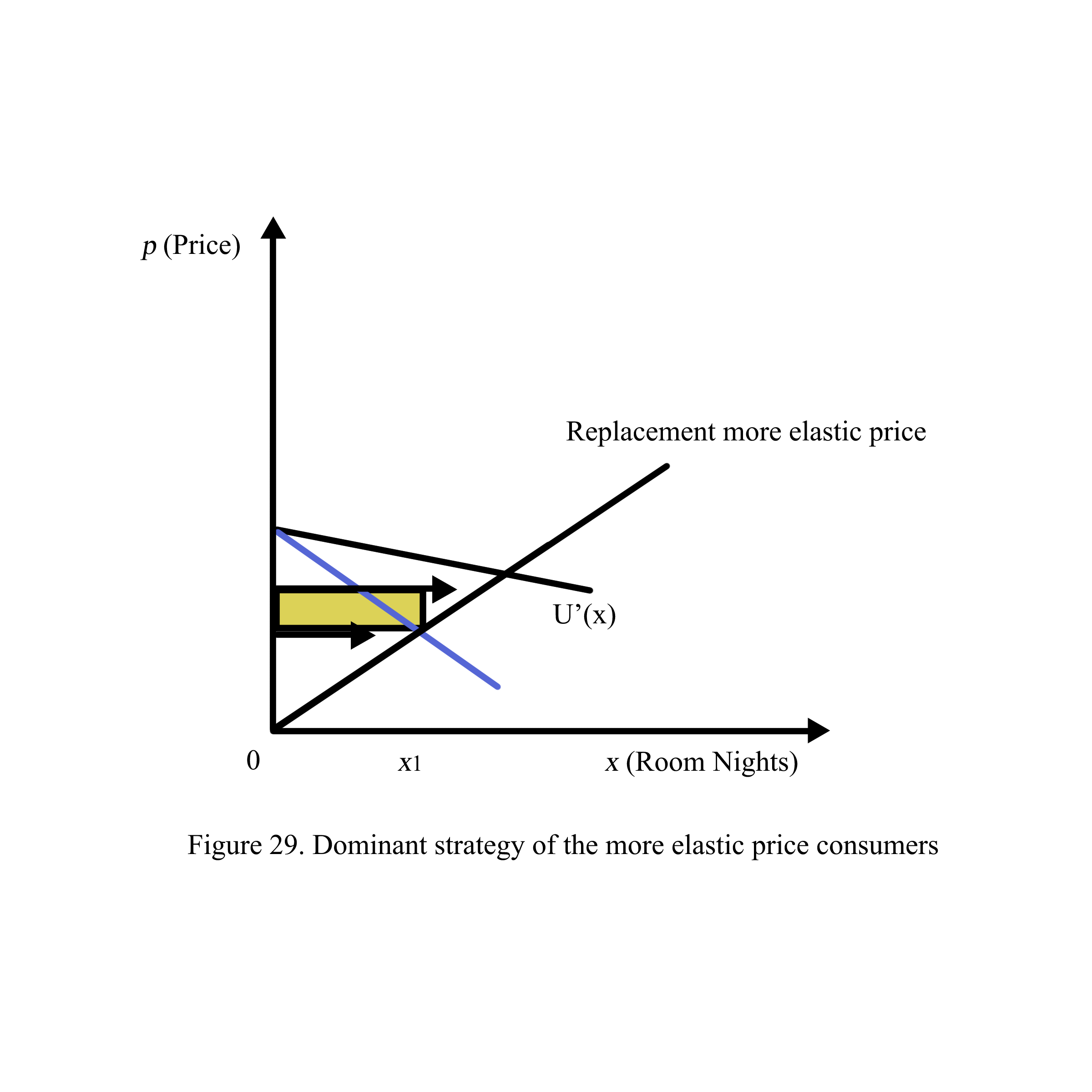5 Game Theory
Competencies
1. Use graphs to describe three concepts of Game Theory: best response, Nash equilibrium, and dominant strategy
2. Identify the producer’s behavior to maximize his revenue
3. Identify the consumer’s behavior to maximize his utility
Chapter Outlines
1. Demand downward and Supply upward in best response
2. Demand meets Supply in Nash equilibrium
3. The dominant for Producer in first half and the dominant for Consumer in the second half.
In the previous chapter, we discussed how revenue management maximizes revenue by leveraging the derivatives of the revenue function relative to the derivatives of demand and supply constraints. This chapter examines the controlling the market dynamics of demand and supply through the interplay of cooperation and competition games.
Game theory is the competition between two sides; each side will act and response to the other side’s action in order to reach the goal through their best responses, Nash equilibrium, and dominant strategies. “The notion of equilibrium points in the theory of games is as significant as the concept of equilibrium in classical mechanics.” – John Nash, Non-Cooperative Games, Annals of Mathematics, 1951.
When it is applied to revenue management, the competitions among providers and consumers are summarized as follows: (1) between the provider and the consumer, (2) the provider and other providers (comp set), and (3) the consumer and other replaced customers.
- Producer vs. Consumer
1.1. Best Response
In the market, both of the producer and the consumer aim to maximize their benefits; the producer with the best response of marginal cost (C’(x)) and the consumer with the best response of marginal value of consumption (U’(x)) as follows: (Figure 16)
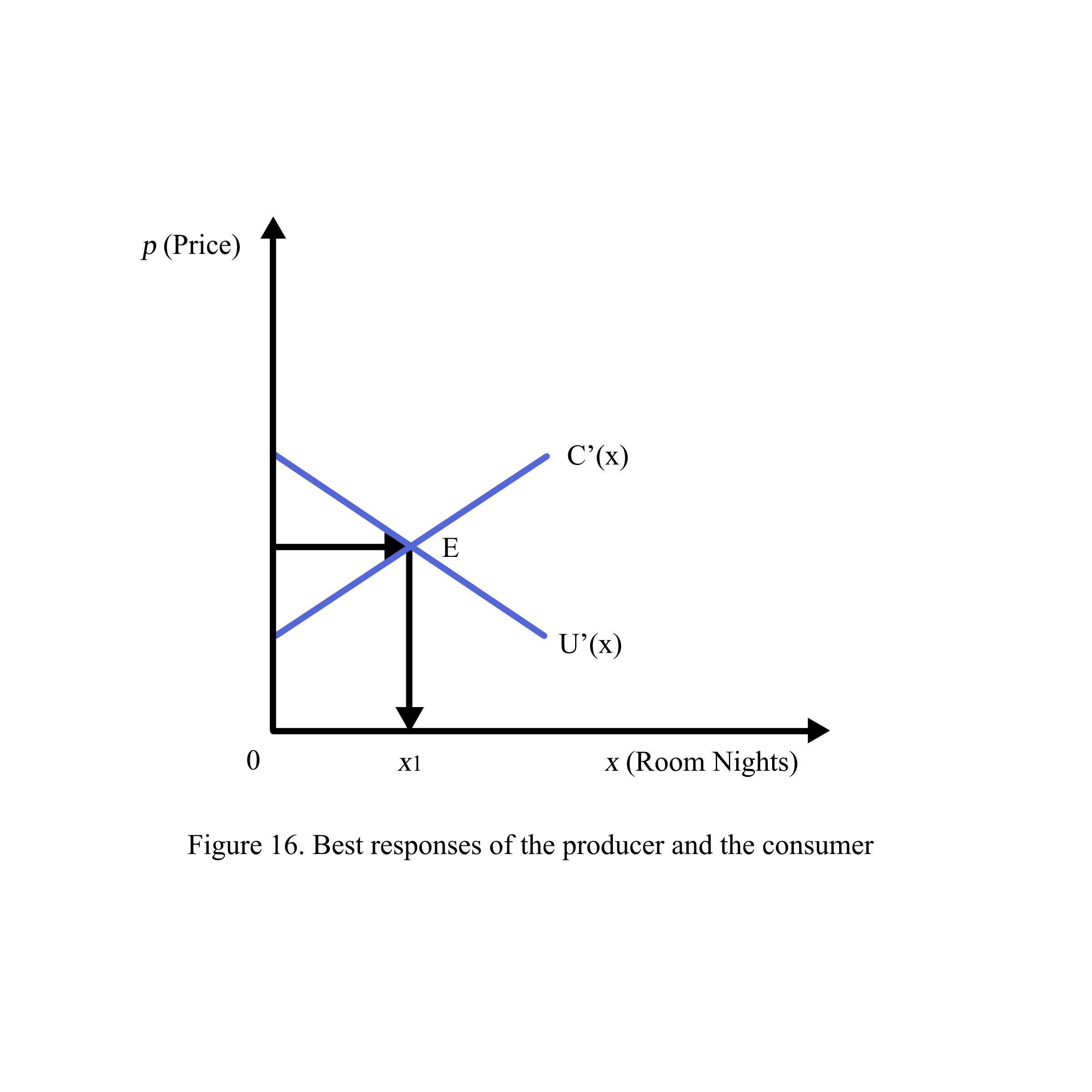
1.2. Nash Equilibrium
Nash equilibrium is the state that both the producer and the consumer win; that is, the profit of the producer is equal to the benefit of the consumer. Consumer surplus (1) is equal to producer surplus (2) in the Nash equilibrium in Figure 17.
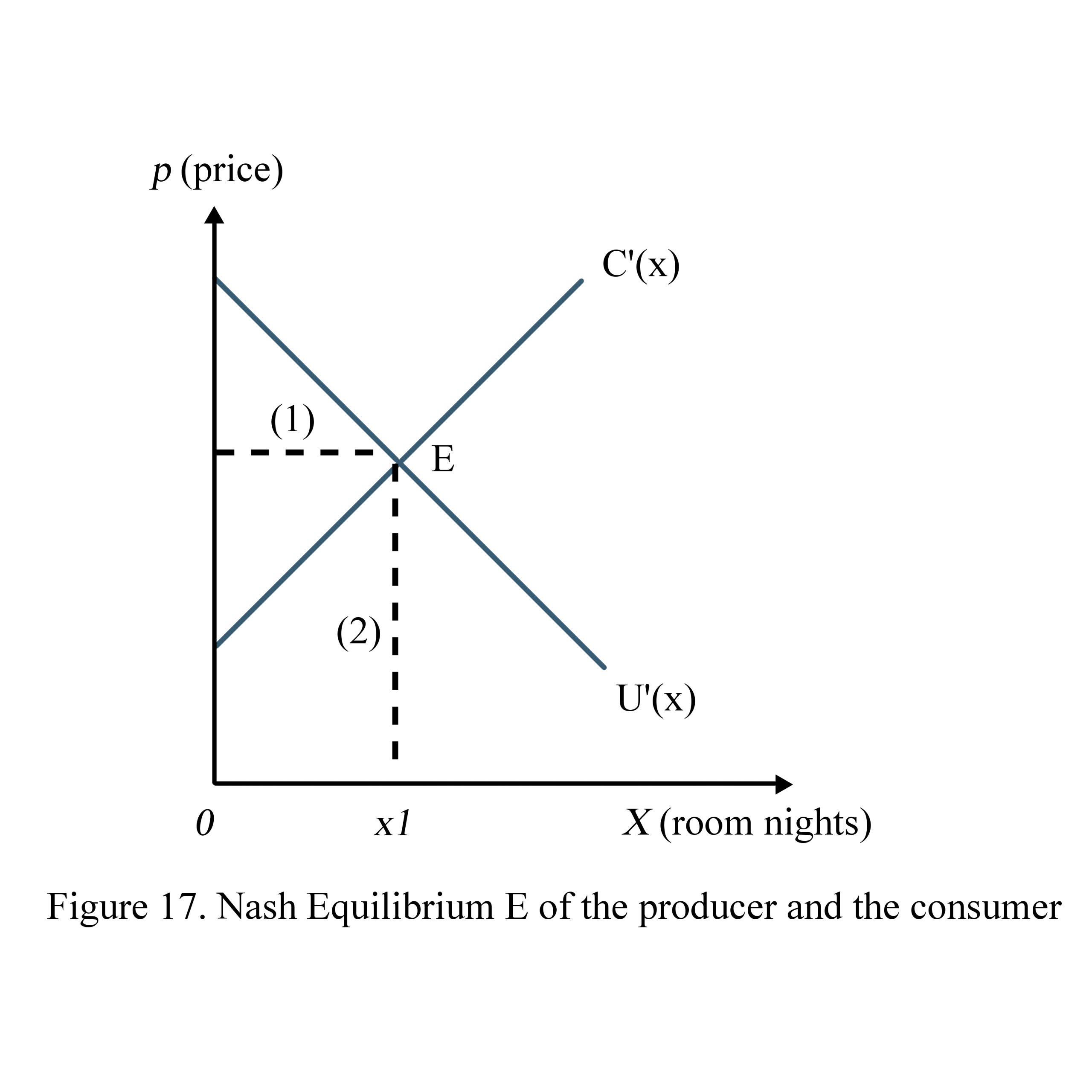
1.3. Dominant strategy
Dominant strategy is the strategy that one side always wins no matter what the responses of the other side.
1.3.1. Dominant strategy for the producer
The blue shaded area in Figure 18 indicates the benefit of the consumer so the price set in this area will deduct the benefit of the consumer; that is, the producer always wins in this area. The area is thus representing the dominant strategy of the producer.
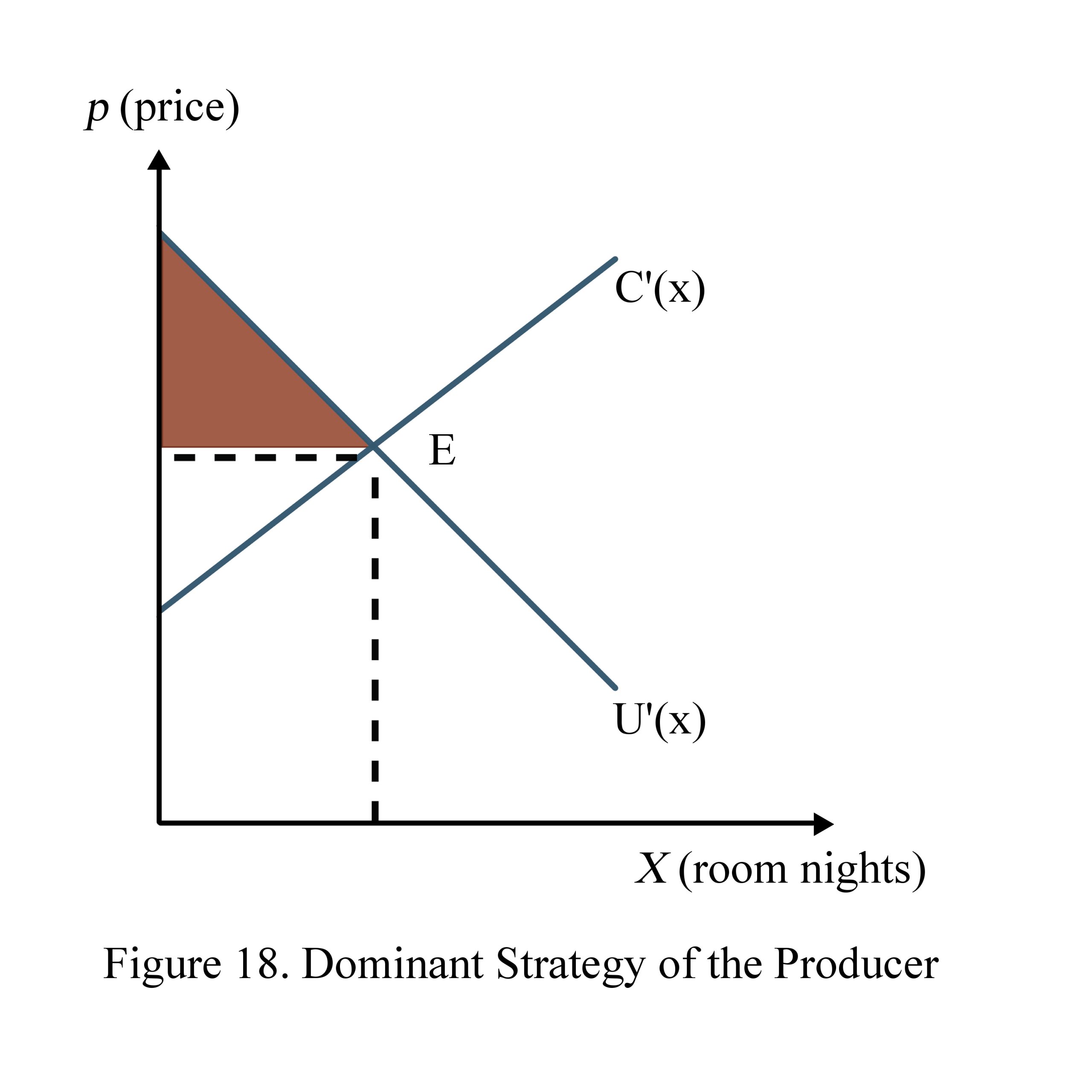
1.3.2. Dominant strategy for the consumer
The blue shaded area in Figure 19 indicates the benefit of the producer so the price set in this area will deduct the benefit of the producer; that is, the consumer always wins in this area. The area is thus representing the dominant strategy of the consumer.
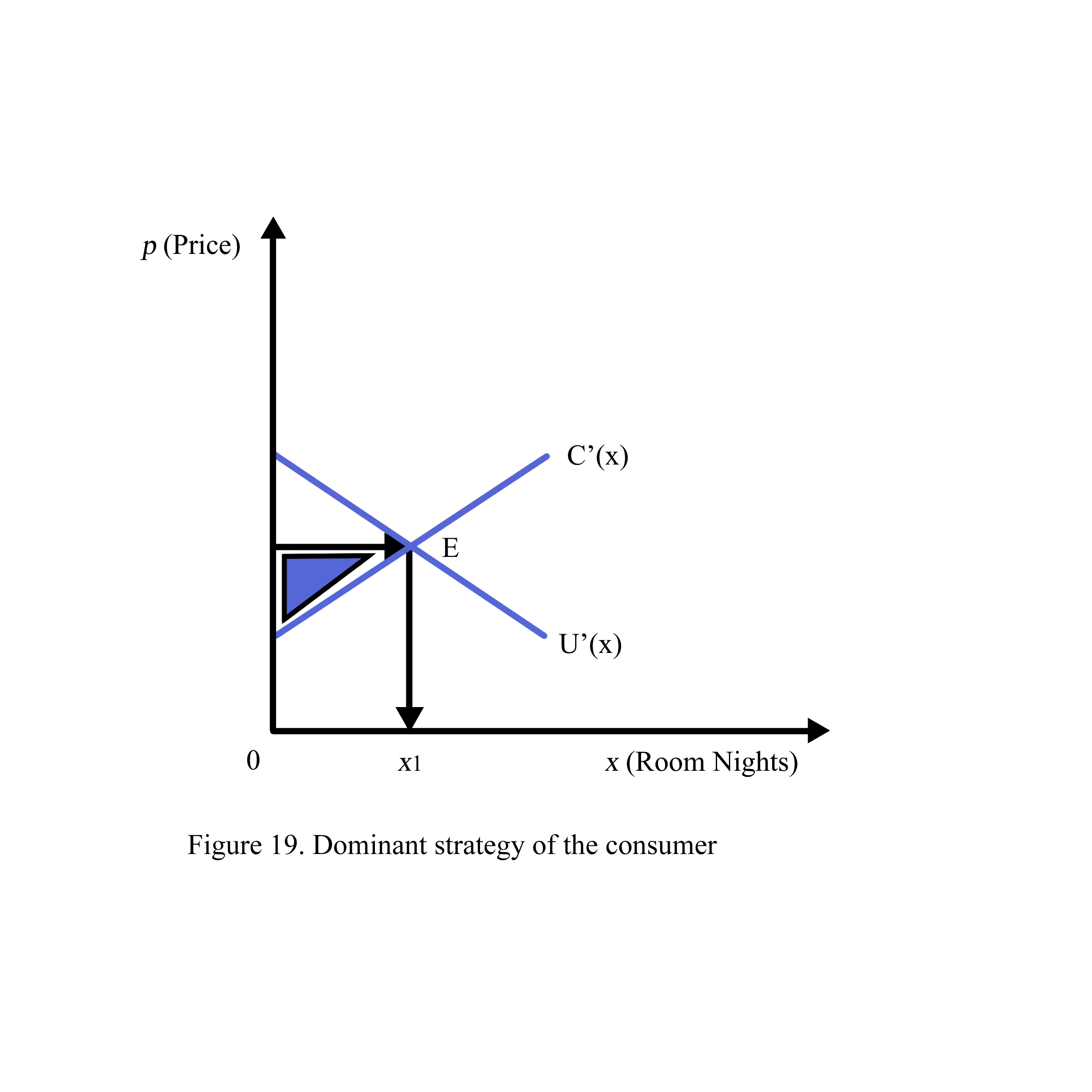
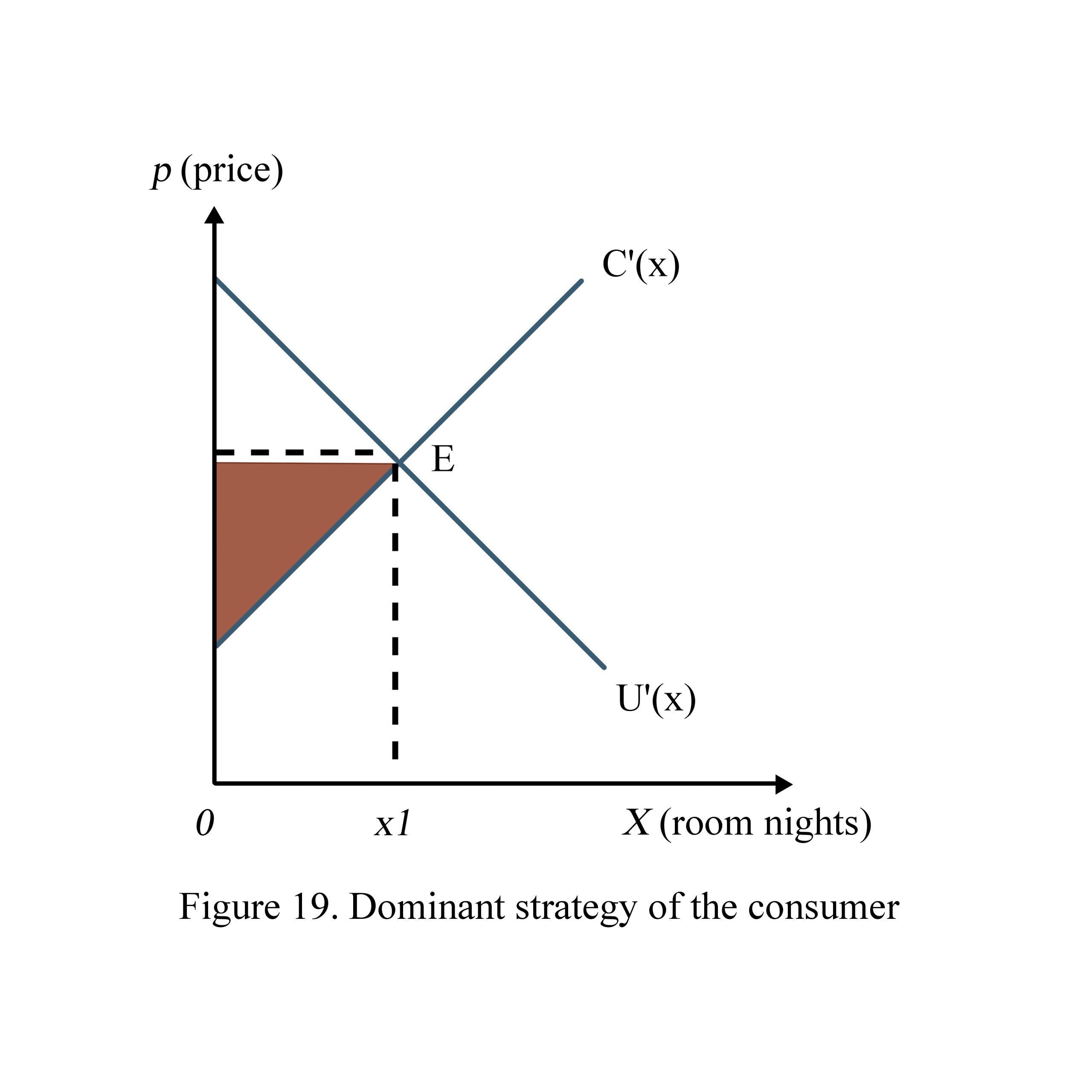
2. Provider vs. Comp Set. i.e., other providers
2.1. Best Response
In hotel competition, the comp set is a group of hotel competitors that have the similar characteristics of location, rank, quality, and size to target on a certain segment of customers. The best response for a hotel to its comp set is its marginal cost C’(x); if its price is lower (higher) than the comp set’s, the best response will be more (less) competitive than the comp set’s in Figure 20.
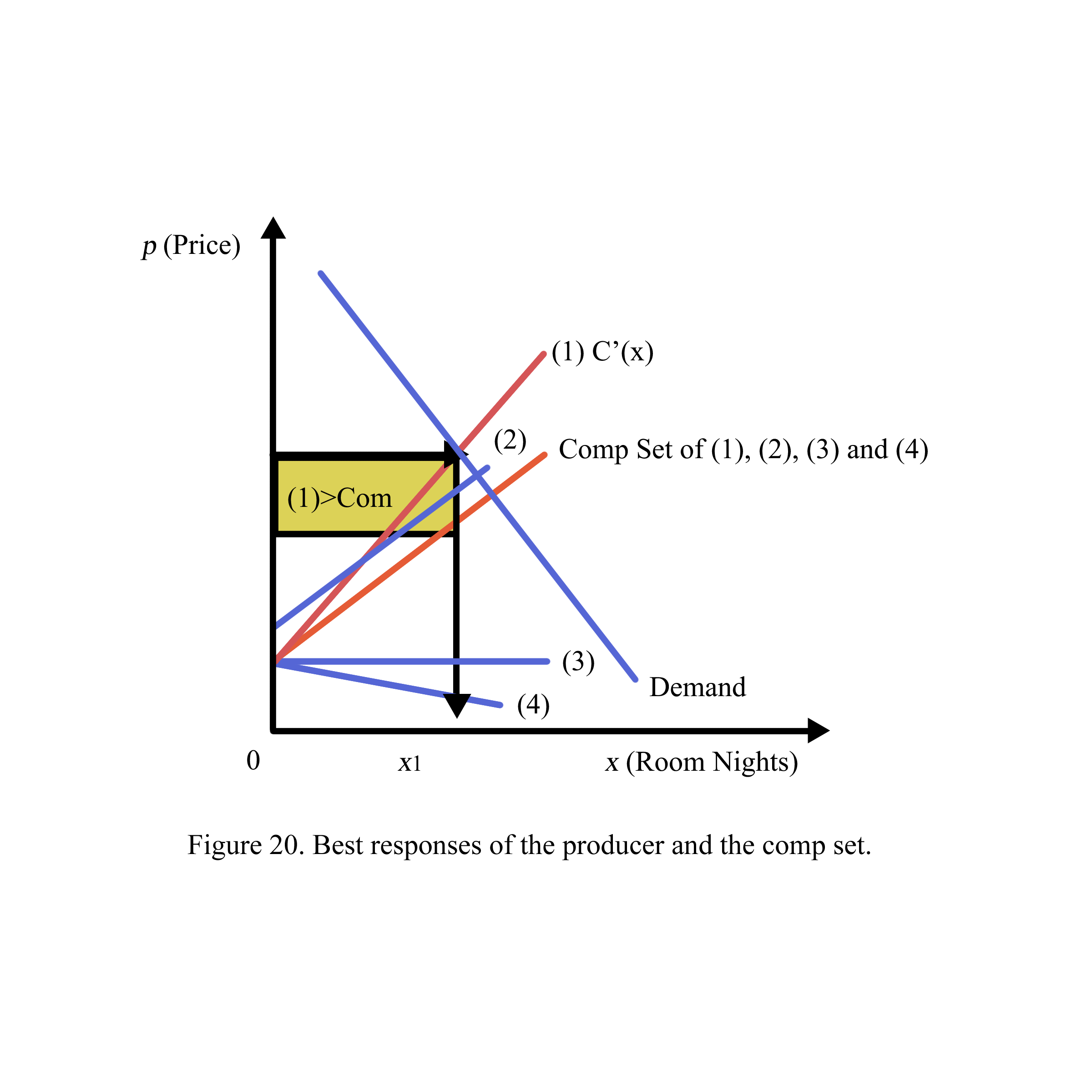
2.2. Nash Equilibrium
Nash equilibrium is the state that both the producer and the comp set win; that is, the profit of the producer is equal to the benefit of the comp set. Comp set surplus is equal to producer surplus (blue shaded area) in the Nash equilibrium in Figure 21.
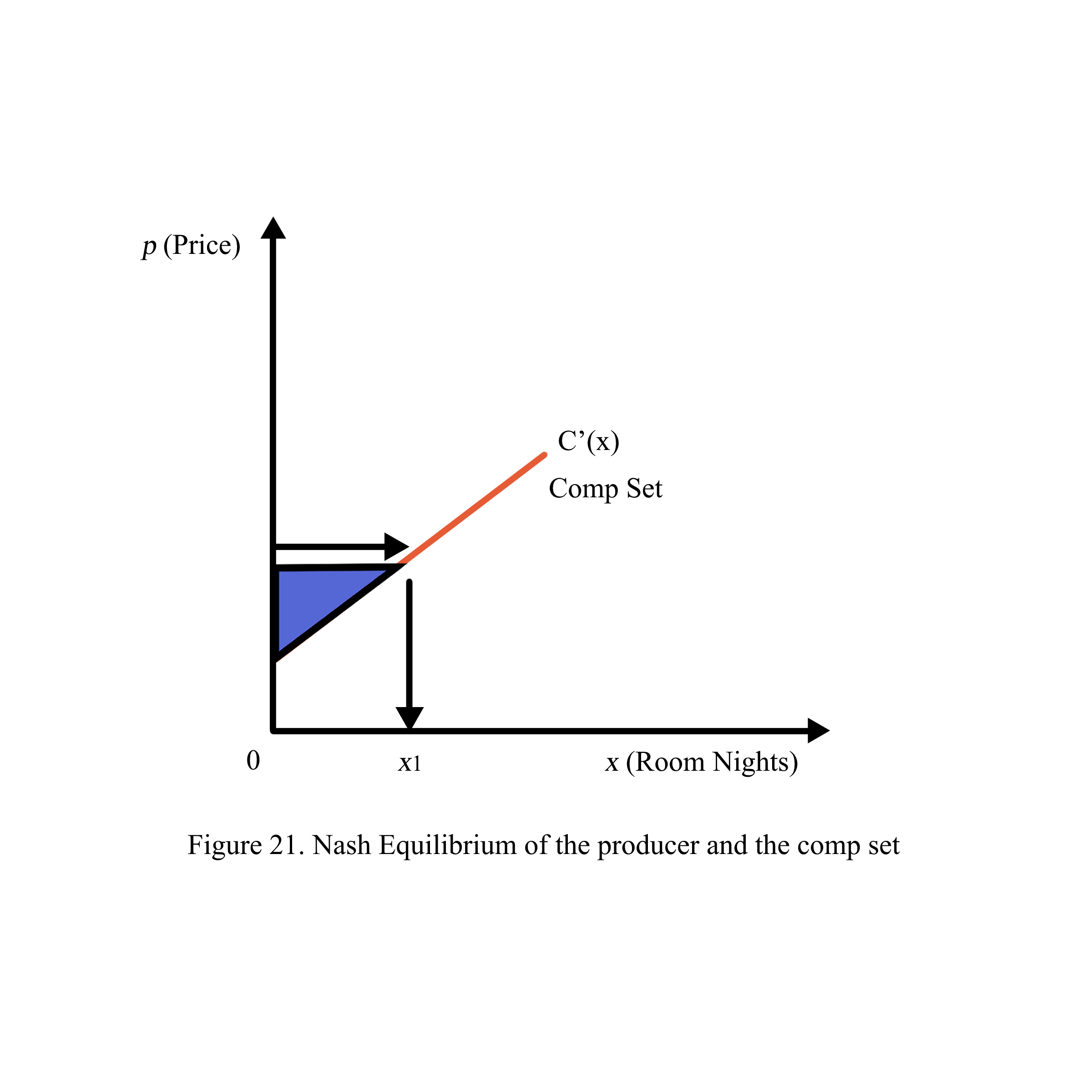
2.3. Dominant strategy
Dominant strategy is the strategy that one side always wins no matter what the responses of the other side.
2.3.1. Dominant strategy for Comp set
The yellow shaded area in Figure 22 indicates the benefit of the comp set so the price set in this area will deduct the benefit of the producer in the competition of reduced cost; that is, the comp set always wins in this area. The area is thus representing the dominant strategy of the comp set.
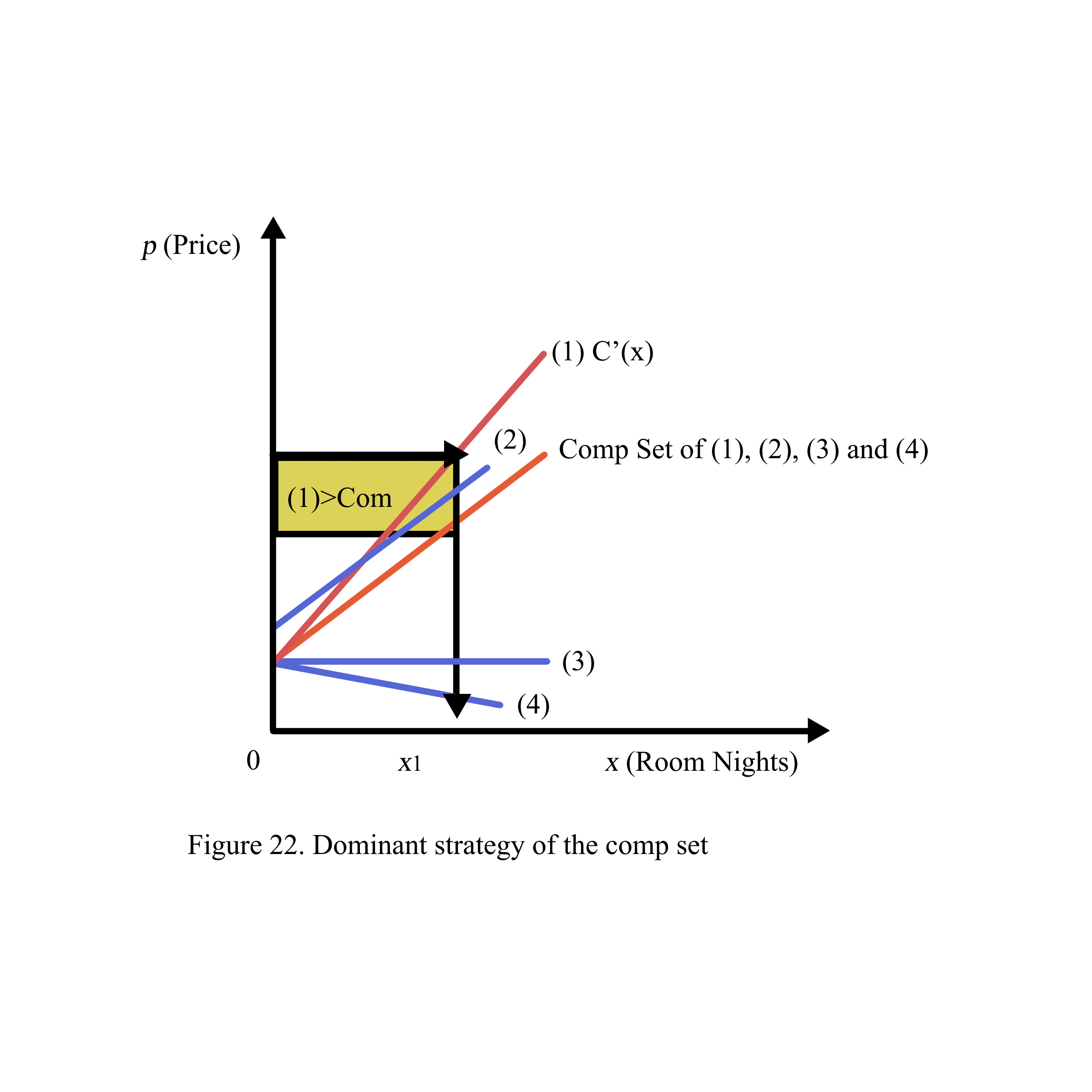
2.3.2. Dominant strategy for the producer
The yellow shaded area in Figure 23 indicates the benefit of the comp set so the price set in this area will deduct the benefit of the producer in the competition of reduced cost; that is, the comp set always wins in this area. The area is thus representing the dominant strategy of the comp set.
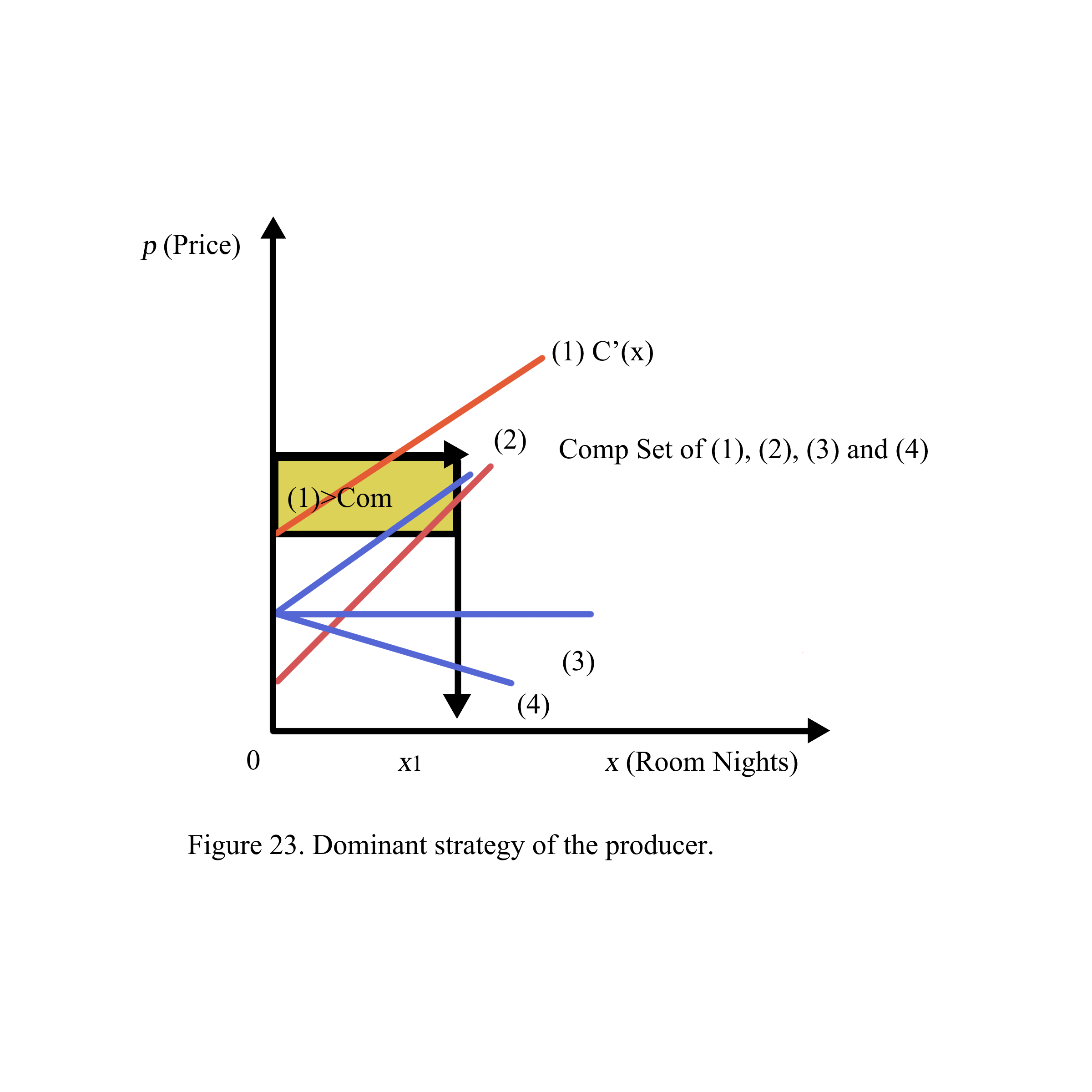
3. Consumer vs. Replacement
Two types of replacement: Income replacement and Price Sensitivity replacement
3.1. Best Response
3.1.1. Best Response for Income Replacement
The best response for the consumer in the competition with other higher income consumers is (1) more favorable when the producer increasing price and (2) less favorable when the producer decreasing price (Figure 24).
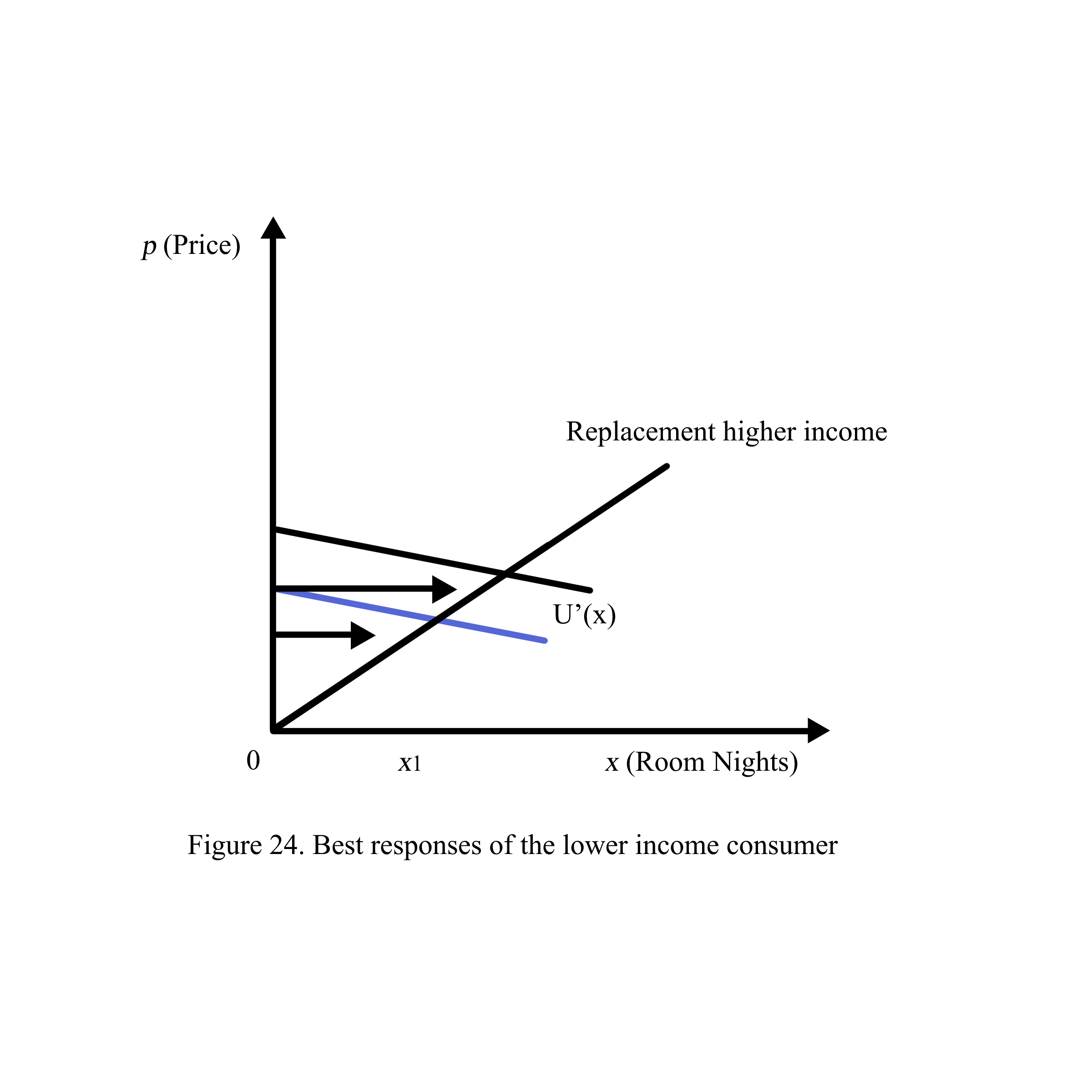
3.1.2. Best Response for Price Sensitivity Replacement
The best response for the consumer in the competition with other more elastic price consumers is (1) more favorable when the producer increasing price and (2) less favorable when the producer decreasing price (Figure 25).
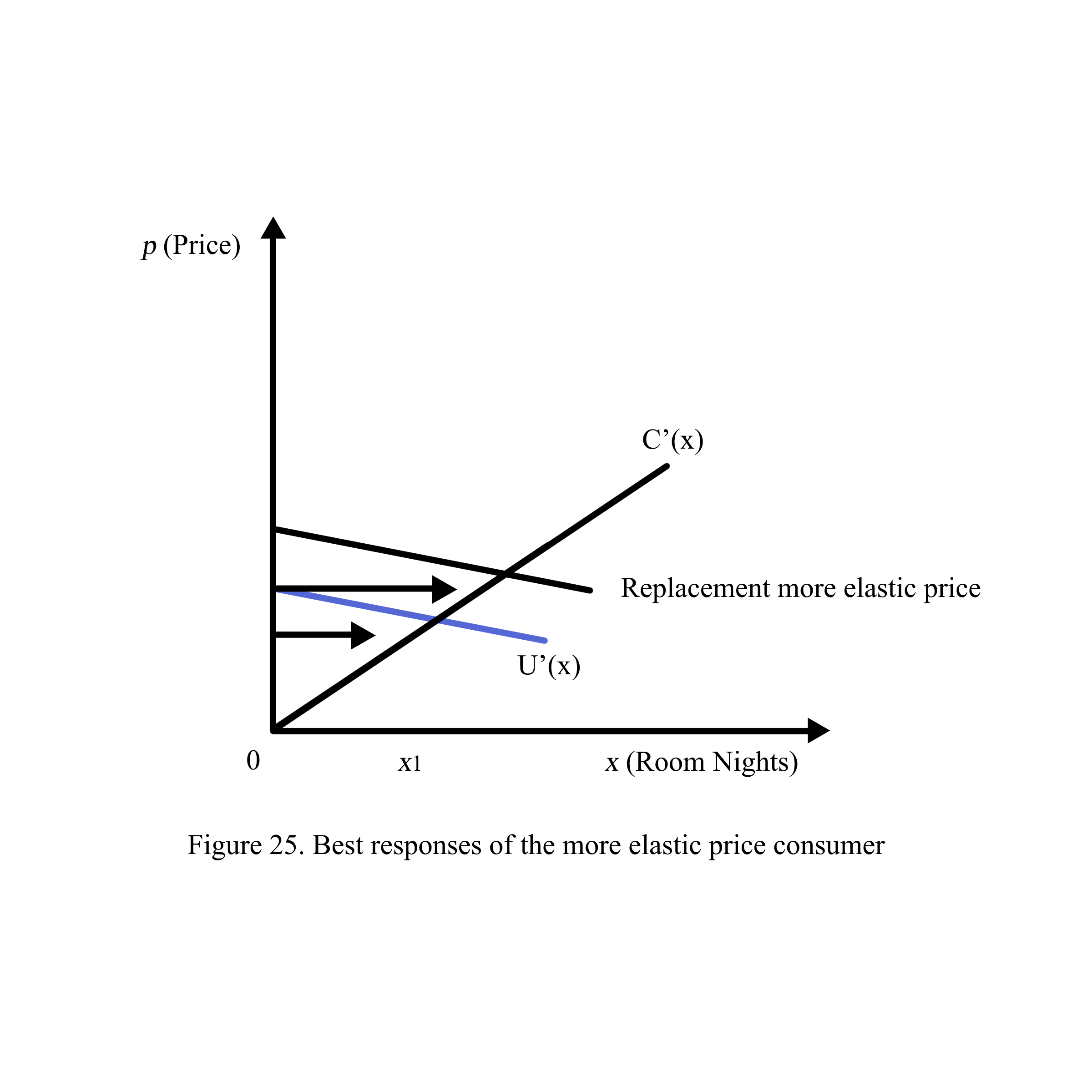
3.2. Nash Equilibrium
Nash equilibrium is the state that both the consumer and the replacement win; that is, the benefit of the consumer is equal to the benefit of the replacement in the Nash equilibrium in Figure 26 (income) and Figure 27 (price sensitivity).
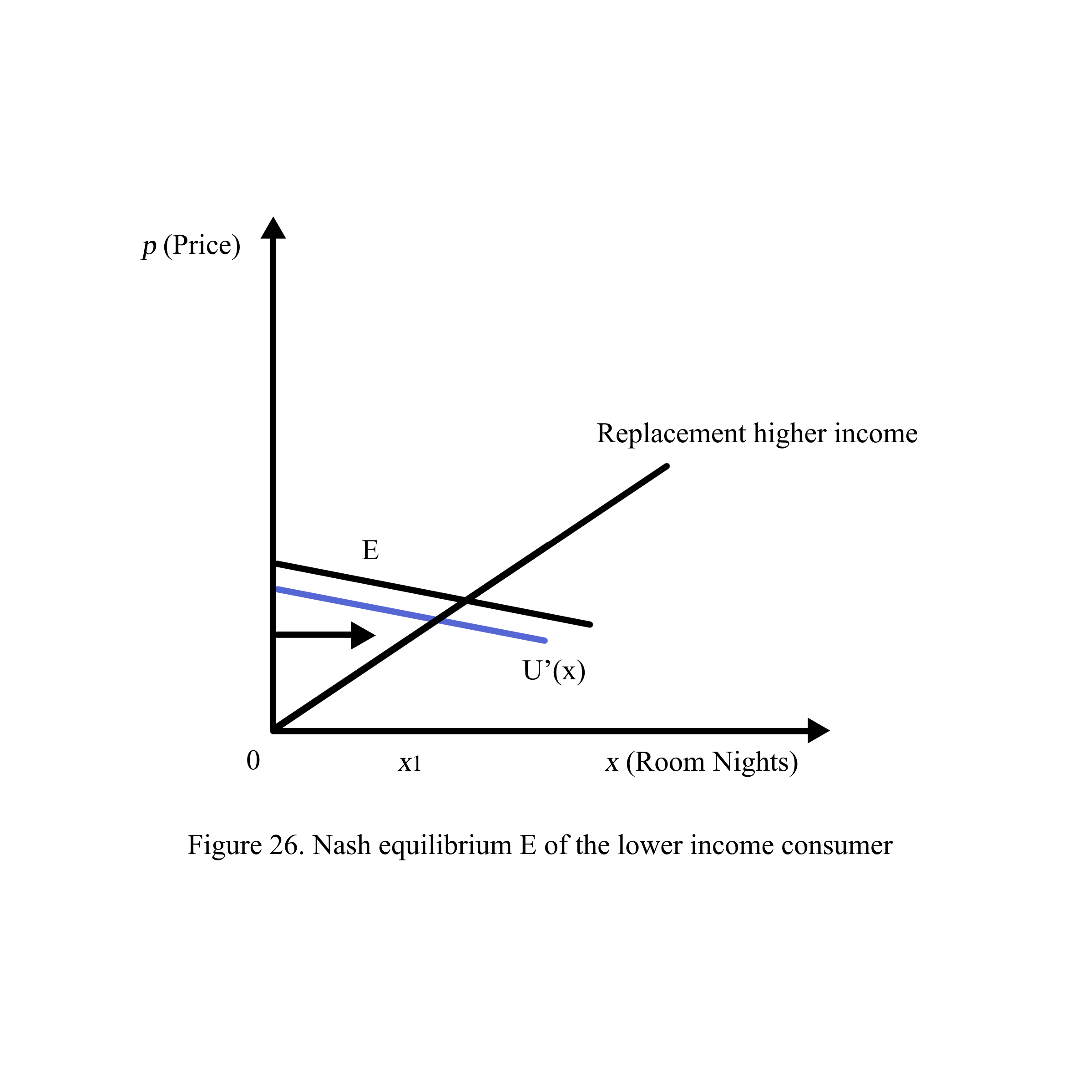
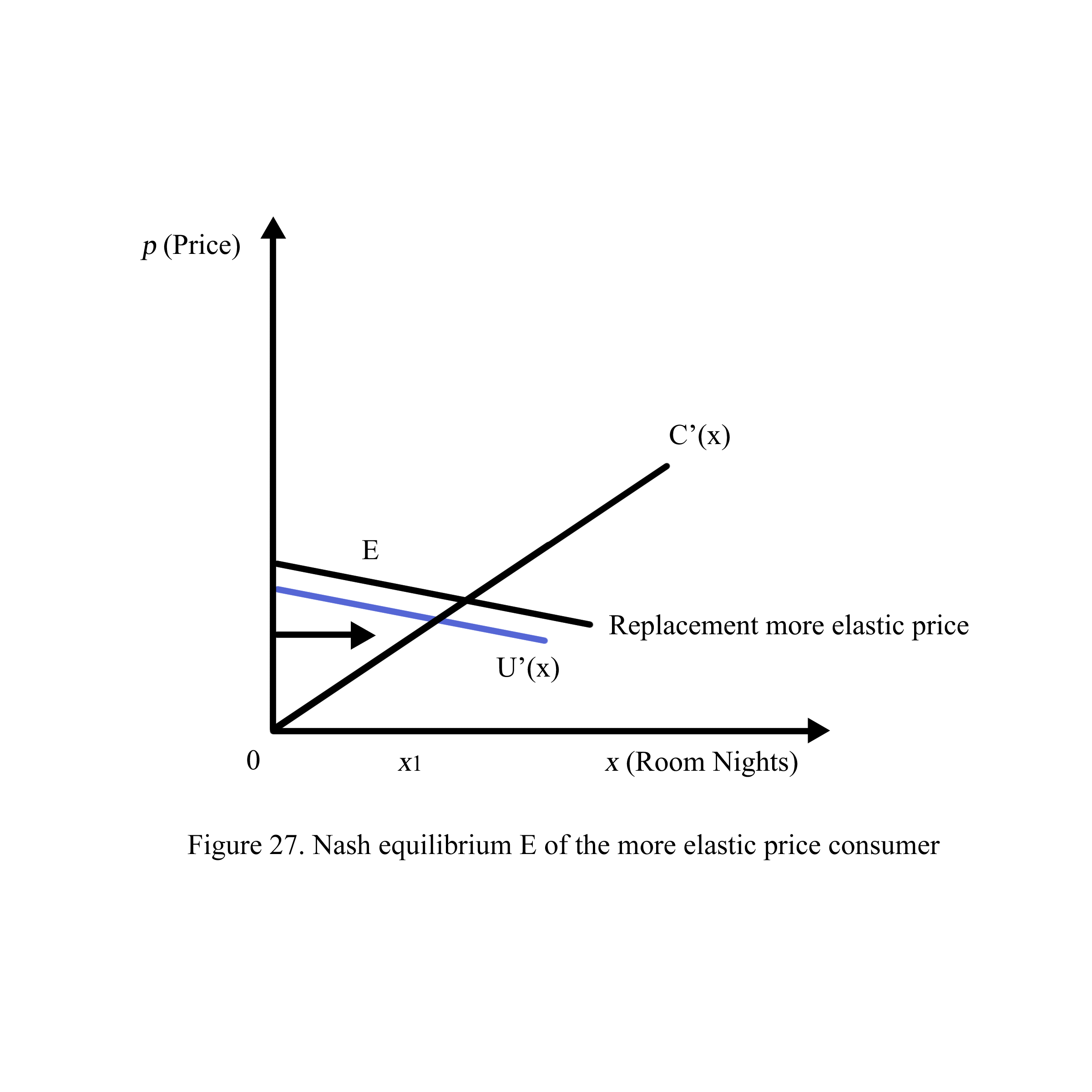
3.3. Dominant Strategy
3.3.1. Dominant strategy for lower income consumer
The yellow shaded area in Figure 28 indicates the benefit of the lower income so the price set in this area will deduct the benefit of the lower income; that is, the higher income always wins in this area. The area is thus representing the dominant strategy of the higher income when the producer decreases the price.
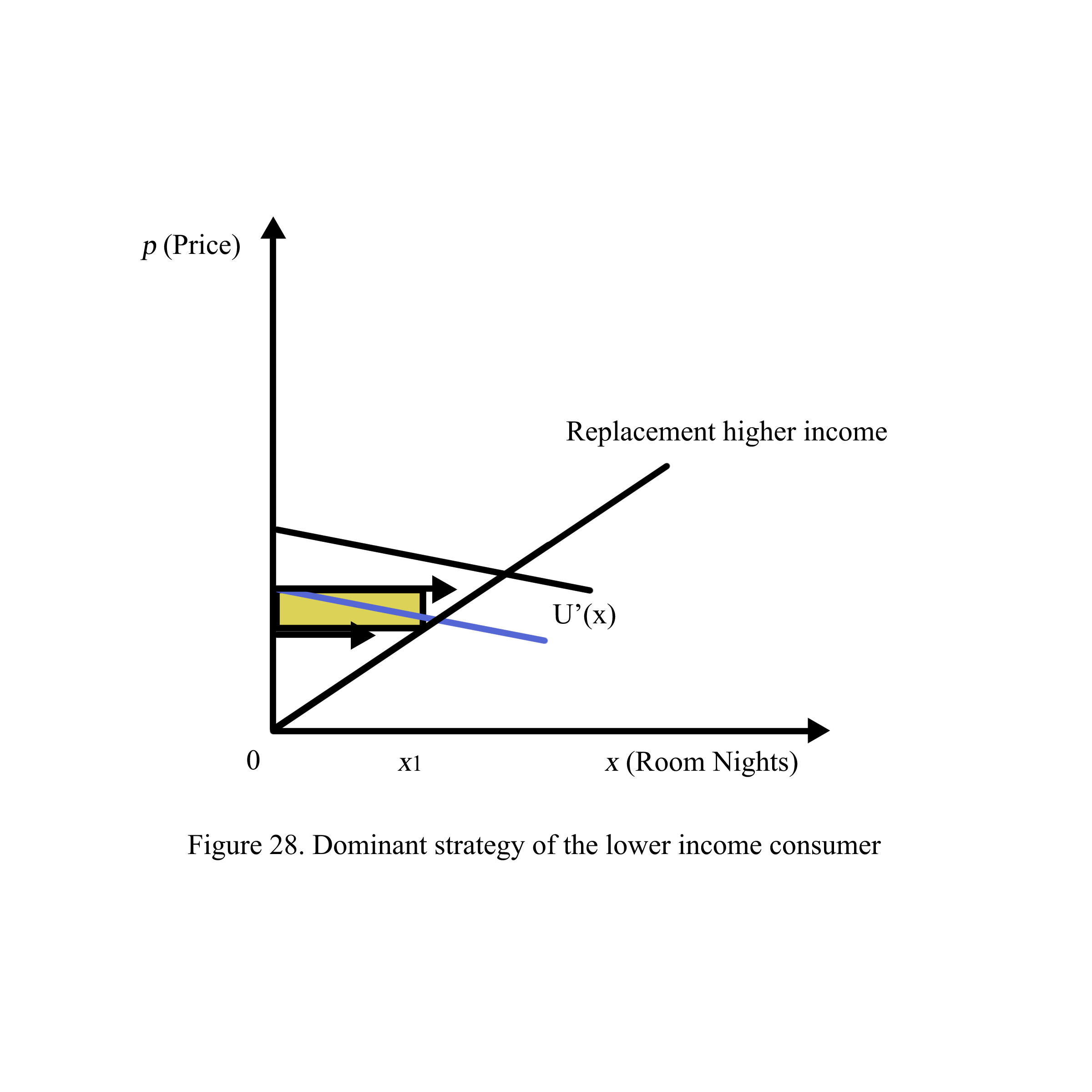
3.3.2. Dominant strategy for more elastic price consumer
The yellow shaded area in Figure 29 indicates the benefit of the inelastic price so the price set in this area will deduct the benefit of the inelastic price; that is, the more elastic price consumer always wins in this area. The area is thus representing the dominant strategy of the more elastic price when the producer decreases the price.
Endnote
Nash, J. (1951). Annals of Mathematics, Second Series, Volume 54, Issue 2, 286-295.
Key terms
Best Responses: A strategy is a best response to the strategies of the other players if it produces the most favorable outcome for a player, given the strategies of the other players. For example, there are two hotels, A and B, are considering whether to lower their prices or keep them the same. Hotel A’s best response is to lower its prices if Hotel B lowers its prices, to avoid losing customers. Conversely, if Hotel B keeps its prices the same, Hotel A’s best response might be to keep its prices the same to maximize profit margins.
Dominant Strategy: A strategy is dominant if, regardless of what the other players do, the strategy earns a player a higher payoff than any other. For example, if Hotel A finds that offering free breakfast attracts more customers, regardless of whether Hotel B offers free breakfast. If offering free breakfast always results in a higher occupancy rate for Hotel A, it is a dominant strategy for Hotel A.
Nash Equilibrium: A Nash equilibrium is a situation in a game where no player can benefit by unilaterally changing their strategy, given the strategies of the other players. For example, Hotels A and B are deciding on a pricing strategy: high price or low price. If both hotels choose to set high prices, they might find a balanced demand. If Hotel A expects Hotel B to set a high price, Hotel A’s best response might be to set a high price too, leading to a Nash equilibrium where both set high prices and neither benefit from changing their strategy unilaterally.
Review Questions
1. Describe the best responses in 4 pictures
2. If the producer decreases the price within a limit of time, use pictures to indicate the scenario?
3. Nash equilibrium is the state that both the producer and the consumer win; that is, the profit of the producer is equal to the benefit of the consumer. Describe the Nash equilibrium in 4 pictures.
4. Use pictures to indicate the Nash equilibrium for the producer?
5. Dominant strategy is the state that one side always wins no matter what the other does anything. Describe the dominant strategy in the four pictures.
6. Use pictures to show the dominant strategy for the consumer?

